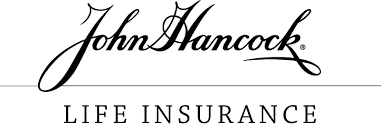No one lives forever. And it’s a grim fact of life that the older you get, the higher your chances of dying on any given day.
The cost and availability of life insurance reflect this reality. Older adults — even if they’re in good health — are less likely to qualify for generous life insurance coverage and are all but assured of paying more for said coverage than younger applicants.
Fortunately, life insurance companies don’t shut the door on you once you reach a certain age. Many of the best life insurance companies around offer coverage to people buying life insurance well into their golden years. Here, we assess the top life insurance providers for people eligible for AARP membership — that is, adults age 50 and older.
Best Life Insurance Companies for People Over 50
These are the best life insurance companies for people over the age of 50. Each does at least one thing really well, whether it’s providing reasonably priced coverage with no risk of rejection due to health issues, offering high coverage limits for high net worth policyholders, or providing multiple types of life insurance to older folks.
The best overall pick here offers the most value for the greatest number of potential applicants who need life insurance, in our view.
Best Overall: Mutual of Omaha

Mutual of Omaha is the best overall life insurance company for older adults. That’s due in part to a flexible whole life insurance policy that’s guaranteed issue, meaning it doesn’t require a medical exam and won’t turn you down for health reasons. That’s an important consideration for older Americans, who are more likely to have age-related health issues.
Mutual of Omaha’s guaranteed issue policy is open to applicants as old as 85 in most states. The death benefit ranges up to $25,000 and rates remain level as long as the policy is in effect. Crucially, the policy builds cash value over time, which means you can borrow against it if the need arises.
Mutual of Omaha offers other types of policies for older applicants, including level term and convertible term (which you can convert to a permanent policy after a waiting period). Mutual of Omaha accepts term life applications from people as old as 80 — an unusually late cutoff for this type of coverage.
Additional features:
- Renew your term policy up to age 95, although premiums will increase
- Guaranteed issue coverage offers an immediate return of all premiums paid plus 10% if you die of natural causes in the first two years
- No waiting period whole life final expense insurance available through agents up to $40,000
- Available riders include disability income and unemployment protection (waiver of premium while you’re unemployed)
- Get a term as long as 30 years, even if you apply after age 50
Best for Guaranteed Issue Life Insurance: AIG Direct

AIG Direct is the best life insurance company for older Americans seeking guaranteed issue coverage that won’t change or lapse for health reasons and ensures you’re protected against the unknown.
The best thing about AIG Direct is its unusually robust living benefits lineup. These are optional riders that increase your policy’s potential value if certain conditions are met before you die.
Two in particular are worth noting for older policyholders:
- An accelerated death benefit rider worth up to 50% of your death benefit. This benefit kicks in if you’re diagnosed with a qualifying terminal illness, such as cancer or ALS.
- A chronic illness rider that provides a lower, variable payment — taken from your death benefit — to cover costs associated with a serious illness that affects your ability to self-care.
Additional features:
- Guaranteed issue coverage is available for applicants up to age 80 in most states
- Coverage amounts as high as $25,000
- No paper forms or phone calls required — apply entirely online
Best for High Coverage Limits: John Hancock

John Hancock is one of the few life insurance companies on this list that doesn’t offer guaranteed issue coverage. But that’s actually a blessing in disguise for older applicants, who instead qualify for term life insurance policies with unusually high coverage limits here.
John Hancock’s term life death benefits start at $750,000 and range all the way up to $65 million — way more than most competitors offer. If you prefer permanent life, you can find indexed universal life, variable universal life, and standard universal life instead, also with relatively high coverage limits.
Additional features:
- Affordable premiums overall, even for older adults
- Access to John Hancock Vitality, an optional wellness rewards program that offers valuable discounts on recreational equipment, travel, wearables, and more
- Up to 25% off your life insurance premiums with Vitality
- Opt for an adjustable death benefit that you can increase or decrease as life demands
Best for Accelerated Death Benefit: Transamerica

Transamerica is the best life insurance company for 50-year-olds — and folks considerably older — seeking generous living benefits.
Transamerica’s Financial Foundation Index Universal Life (FFIUL) product is open to applicants as old as 85, although premiums rise steeply with age. With death benefits as high as $500,000, FFIUL is one of the most generous life insurance options for older people, period — and it’s made even more generous by an optional accelerated death benefit rider that lets you claim up to your entire death benefit during life in the event of a qualifying terminal diagnosis.
FFIUL offers an optional cash value component as well, making it a good potential store of liquidity during retirement.
Additional features:
- FFIUL has a guaranteed minimum interest rate on the cash value component
- Qualify for no-exam final expenses insurance up to $50,000 with Transamerica’s Final Expense Solution Portfolio
- Term and whole life policies available as well
Best for Affordable Premiums: New York Life (AARP)

New York Life is the exclusive life insurance partner of AARP. That alone should be a vote of confidence in the storied insurer. If anyone knows what’s best for people over age 50, it’s a massive advocacy organization that exists for their sole benefit.
Thanks in part to its partnership with AARP, New York Life offers affordable premiums on guaranteed issue policies up to $25,000 — enough to cover most folks’ final expenses and then some. It also offers two other reasonably priced, lower-benefit types of life insurance coverage for older adults:
- Level benefit term life that provides up to $100,000 in coverage up to age 80, with premiums that may increase over time
- Level premium permanent life that provides up to $50,000 in coverage indefinitely with no medical exam required
Additional features:
- Highest possible financial strength rating from AM Best: A++ (Superior)
- Coverage starts at $10,000 for level benefit term life
- Optional living benefit rider for terminal and chronic illnesses
Methodology: How We Select the Best Life Insurance for People 50 and Over
We use several important factors to assess the best life insurance for people 50 and older. Each factor relates in some way to the life insurance policyholder experience.
Available Death Benefit (Coverage Amount)
Insurers tend to be stingy with older applicants. For term life coverage, this reflects the policyholder’s higher likelihood of death during the policy term. For whole life coverage, which generally doesn’t expire due to age, this reflects the fact that older policyholders on average won’t pay premiums for as long as younger policyholders.
The best life insurance companies for older people offer policies with relatively high death benefits. Their guaranteed issue policies have above-average payouts — $50,000 or even $100,000 — and their term life policies go much higher than that. This is important for policyholders still carrying significant debt or expected future expenses into retirement, perhaps due to later-in-life homebuying or family creation.
Available Policy Types
It’s more common for older applicants to seek lower-benefit guaranteed issue policies. Sometimes marketed as “final expenses” policies, these are usually adequate to cover funeral and burial costs but not much else.
The nice thing about guaranteed issue coverage is the lack of medical underwriting — you can’t be turned down for health reasons. And this type of policy usually remains in force indefinitely as long as you pay your premiums.
But some older life insurance applicants have higher life insurance needs. That’s why we prefer companies that offer a range of term and permanent life insurance options, including term insurance and universal life insurance, to people in their 50s, 60s, and even beyond.
Age Requirements
Most life insurance companies allow people in their early 60s to apply for term coverage, but often only for shorter terms — 10, 15, or 20 years at most. Beyond age 65, you’re more likely to qualify for a smaller guaranteed issue policy, although a select few providers do offer term coverage to people past the official retirement age.
All else being equal, we prefer insurers that offer term coverage to people past age 65 and guaranteed issue policies to people well into their 80s.
Medical Underwriting and Exam Requirement
Although not impossible to come by, term life coverage without a medical exam (no-exam life insurance) is harder for older people to find. We do look for and prefer companies that offer no-exam term life products to AARP-eligible folks, however.
Otherwise, if you’d prefer to forgo the life insurance medical exam, your best option is guaranteed issue coverage. Guaranteed issue applications have no health questions and don’t consider your health status at all.
Policy Riders and Add-ons
Policy riders and add-ons are especially important for older policyholders. For example, if you’re concerned about a chronic or terminal illness creating a financial burden for you and your loved ones before you pass on, you’ll want to make sure your carrier offers a generous accelerated death benefit.
Some insurers, like John Hancock, go even further and offer a slate of wellness benefits at little to no additional cost. These benefits — complimentary subscriptions to therapy apps and discounted or free wearable devices, for example — can be worth hundreds of dollars each year. You may come out ahead if you’re able to use them consistently.
Frequently Asked Questions About Life Insurance for People 50 and Over
You have questions about qualifying for life insurance as an older adult. We have answers.
Can You Get Term Life Insurance Over 50?
Yes. One of many common misconceptions about life insurance is that it’s only available to young people.
Most term life insurance providers accept applications from people in their 50s. Some accept applications from people in their 60s as well. Often, the maximum age to apply is 64 or 65.
Some insurers restrict term lengths for older applicants, however. If you’re older 50, you might not qualify for a 30-year term, but you’ll probably be able to find a 10- or 20-year term that fits your needs.
How Much Does Life Insurance Cost for People Over 50?
More than it costs for people under 50.
The unfortunate fact about life insurance is that it gets more expensive as you get older. That’s why it pays — literally — to apply for life insurance earlier in life.
Even if you’re in great health and have boundless energy, you’re riskier to insure at 50 than you are at 30 or 40. You have fewer years to pay premiums into a permanent life insurance policy before you die, and you’re more likely to die while your term life policy remains in force.
You can still find life insurance that fits your budget at 50 and beyond. But you might have to compromise with a shorter term or lower death benefit.
How Much Life Insurance Can Someone Over 50 Get?
This depends on the insurer. If you’re able to pass medical underwriting — including the medical exam — and your health history and lifestyle questionnaires raise no red flags, you can probably qualify for a good-sized death benefit after age 50.
The limiting factor could be your ability to pay for it. The higher the death benefit and the longer the term, the higher your premium will be. And those premiums will rise from a baseline that’s already elevated due to your age. So even if you want $1 million in coverage, you might find yourself priced out of a policy bigger than $500,000.
What’s the Maximum Age to Get Life Insurance?
This also depends on the insurer. Many insurance companies underwrite guaranteed issue life insurance policies for people over age 80, with 85 being a common maximum age to apply. But it’s possible to find coverage even later in the game.
Just don’t expect a generous death benefit — most guaranteed issue policies top out at $25,000 or $50,000 in coverage. They’re meant to cover your final expenses and perhaps settle some small debts rather than provide ongoing income for your survivors.
How to Choose the Best Life Insurance Policy When You’re 50 or Older
Choosing the best life insurance policy for your needs is especially important as you approach your golden years. At this age, you only get so many chances to get it right.
Start by considering the purpose of your policy.
Are you simply making sure your death isn’t an immediate financial burden on your survivors? In that case, a final expenses policy with a small death benefit should be enough. Final expenses insurance is usually guaranteed issue, which means your application can’t be denied for health reasons.
Do you want to provide income or offset ongoing expenses for your loved ones after you pass? In that case, you might need a more generous policy with a higher death benefit. To keep premiums in check, this will probably be a term policy — maybe a 15- or 20-year term, depending on how much risk your insurer is willing to take and how old you are when you apply.
Then, consider the other factors in our methodology above, like the availability of living benefits and riders like accidental death coverage. Consider as well whether your age makes you ineligible for the type of policy you want.
Search thoroughly and you can find a life insurance policy at almost any age. It might not be exactly what you’d hoped for, but it’ll sure be better than no coverage at all.